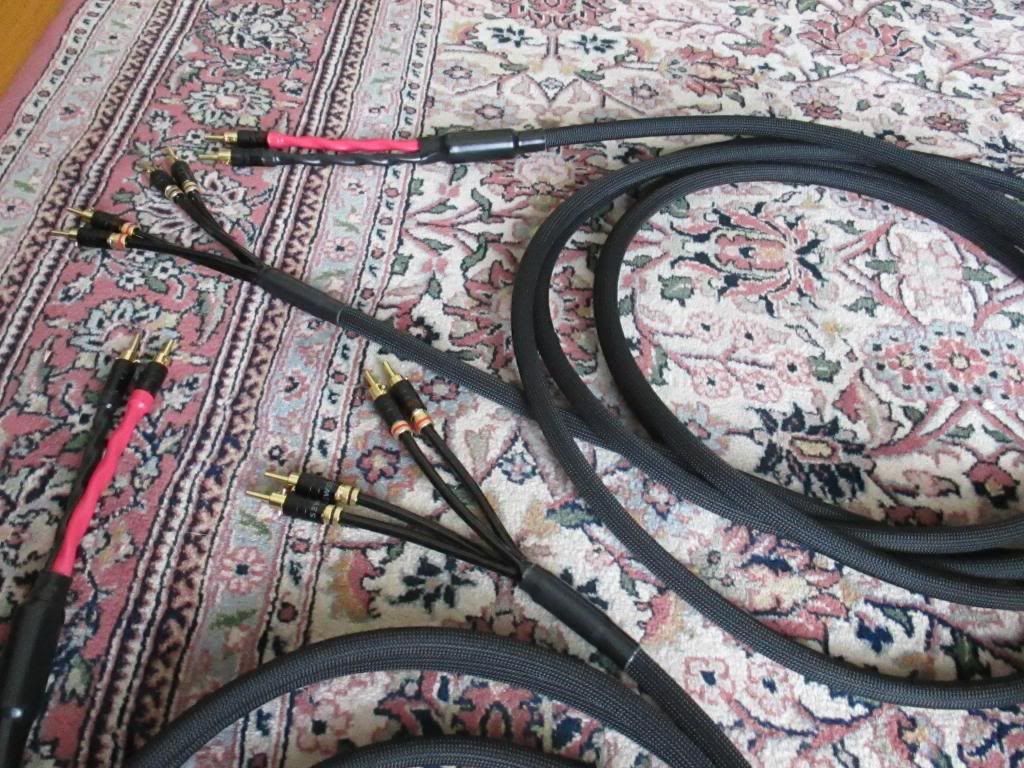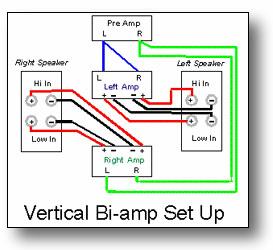willum24
Minor Hero
  Enter your message here...
Enter your message here...
Posts: 48
|
Post by willum24 on May 19, 2014 9:00:34 GMT -5
Since it is the same signal through one unbalanced input on an XPA 100, is there any reason to believe that biwiring my speakers will make any difference at all? Thanks!
|
|
|
|
Post by geebo on May 19, 2014 9:11:57 GMT -5
Since it is the same signal through one unbalanced input on an XPA 100, is there any reason to believe that biwiring my speakers will make any difference at all? Thanks! It depends who you ask. I've tried bi-wiring and found it just ain't worth the trouble. If you already have the extra wire, try it for yourself and see what you think. Theoretically it may make a difference. Audibly I could detect none. If it were me, I wouldn't spend the extra money on the wire though. |
|
|
|
Post by repeetavx on May 19, 2014 11:40:13 GMT -5
My favorite articles on Bi-Wiring (and Bi-Amping). Vandersteen's position on Bi-Wiring.Bowers& Wilkins position on Bi-Wiring.A technical discussion on how active Bi-Amping is soooo much better than just passive Bi-Amping or Bi-Wiring, with an admission during the last third of the article of how Bi-Wiring does indeed improve the sound. Personally I heard a noticeable improvement with bi-wiring, then another step up when I passive vertically bi-amped. Then another big step up when I short coupled my speakers and amps with short (under 3 feet) speaker cables. |
|
|
|
Post by deltadube on May 19, 2014 14:03:01 GMT -5
Since it is the same signal through one unbalanced input on an XPA 100, is there any reason to believe that biwiring my speakers will make any difference at all? Thanks! bi wired!!  |
|
|
|
Post by geebo on May 19, 2014 14:59:51 GMT -5
|
|
willum24
Minor Hero
  Enter your message here...
Enter your message here...
Posts: 48
|
Post by willum24 on May 19, 2014 15:00:23 GMT -5
I guess my next question then is, does it matter which speaker terminals I use for the high and which for the low frequency connection on the XPA 100?
|
|
|
|
Post by geebo on May 19, 2014 15:04:51 GMT -5
I guess my next question then is, does it matter which speaker terminals I use for the high and which for the low frequency connection on the XPA 100? Generally speaking, the bottom set connects to the low pass section of the crossover and the upper set connects to the high pass section. If using the same wires it makes no difference. |
|
|
|
Post by audiosyndrome on May 19, 2014 16:59:03 GMT -5
Since it is the same signal through one unbalanced input on an XPA 100, is there any reason to believe that biwiring my speakers will make any difference at all? Thanks! bi wired!!  Bi-wired NOT. Willum24- give it a try, nothing to loose. But the two cables have to be separated by an inch or two minimum. Not bundled together in one outer sleeve. Russ |
|
|
|
Post by deltadube on May 19, 2014 17:21:34 GMT -5
bi wired!!  Bi-wired NOT. Willum24- give it a try, nothing to loose. But the two cables have to be separated by an inch or two minimum. Not bundled together in one outer sleeve. Russ Russ your about the only guy on the planet that can hear the difference.. |
|
willum24
Minor Hero
  Enter your message here...
Enter your message here...
Posts: 48
|
Post by willum24 on May 19, 2014 18:28:21 GMT -5
I figured it really wouldn't be life altering. Just having monoblocks should be good enough for the RF7s. They're happy with whatever I've thrown them so far  |
|
|
|
Post by pedrocols on May 19, 2014 23:08:24 GMT -5
Some people call it buy-wire
|
|
Deleted
Deleted Member
Posts: 0
|
Post by Deleted on May 21, 2014 0:36:18 GMT -5
Hey willum24 -I have apair of 100s running old 4 ohm AR9s - tried bi-wiring them but no difference at all. Now this may be due to my cramped lounge room conditions and presence of other cable which I try to do my best to keep out of the mix...anyway, went back to a single pair and reconnected the bridging wire between upper and lowers on the 9s. Didn't sound good at all! oh dear. - discovery...old, corroded bare ends on the small lengths of bridges, plus the binding posts needed a good clean off - a bit of dilute muriatic (hydrochloric) acid on the ends followed by a neutralizing in a bi-carb solution and voila! - sounded great! HOWEVER- prior to the 100s I ran a pair of old NAD 2200 stereo power amps via a NAD pre-amp. Here I did find that bi-wiring made a huge difference. It seems to work best when used on stereo power amps only, i.e. vertical bi-amping - left side of each amp drives say the bass and the right side of the amps drive the uppers. There was 200w available for each channel of the 2200s (@4 ohm) - so 200w for top, 200w for bottom, separate circuitry. They worked really, really well for years (until they blew up).  ![]()  |
|

